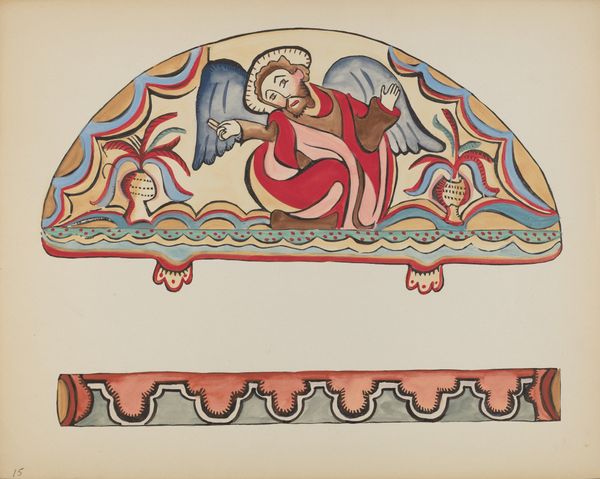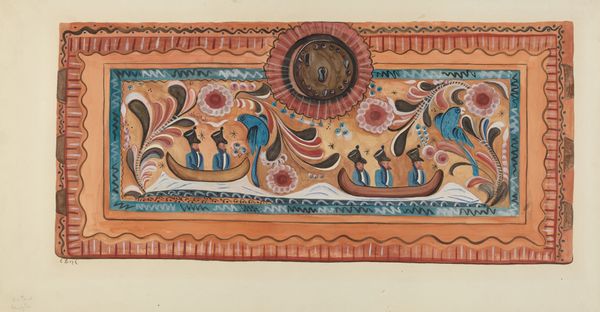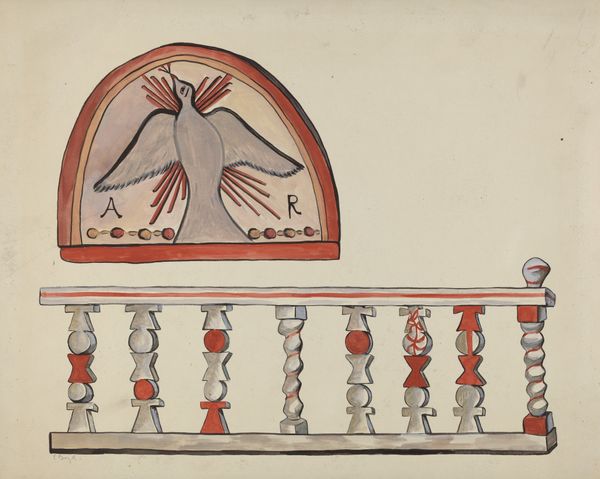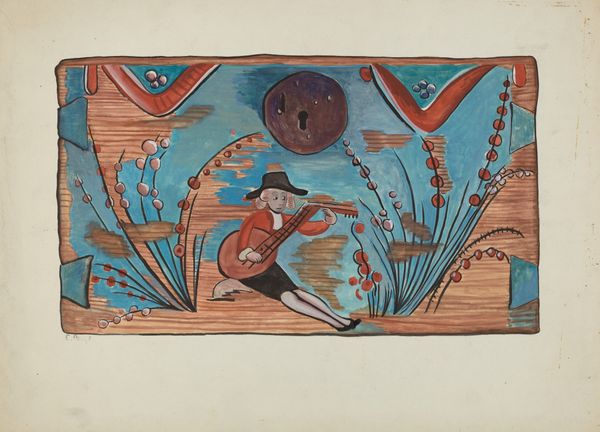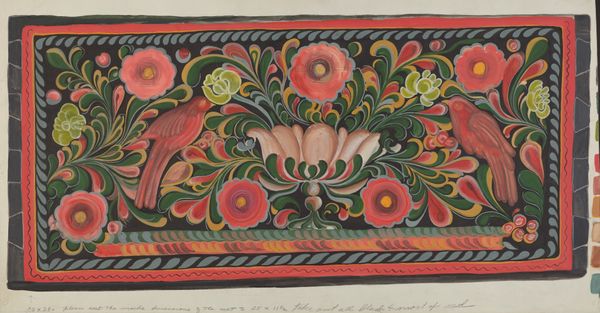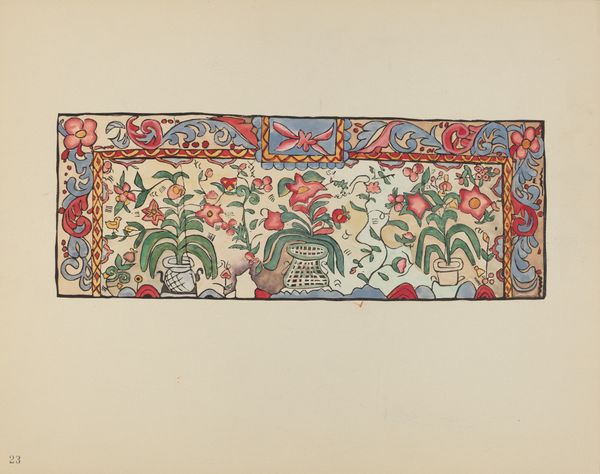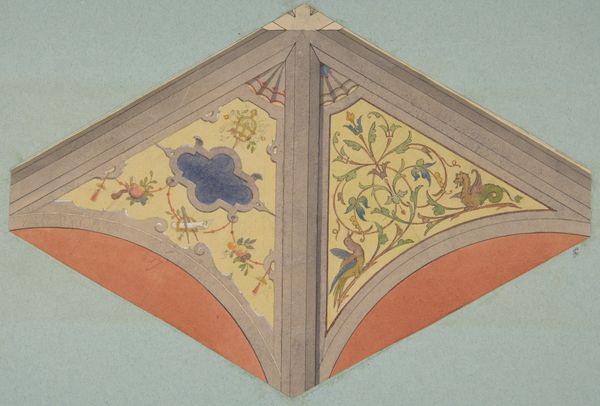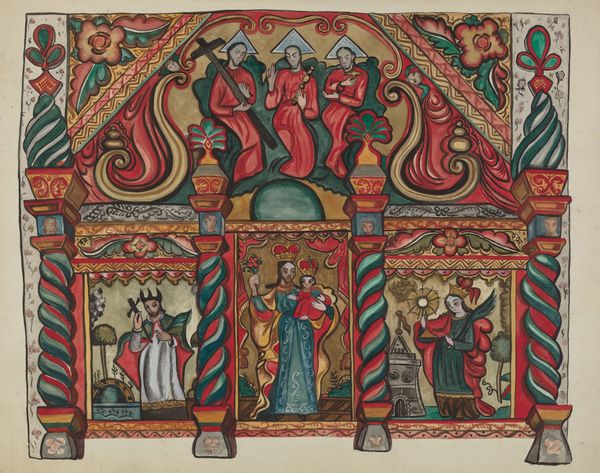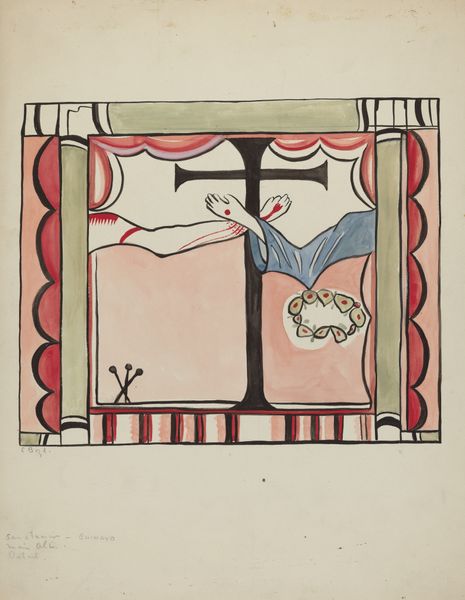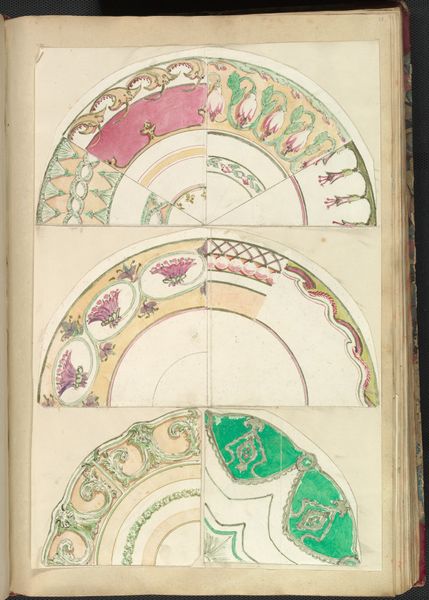
Lunette and Detail from Altar Church at Sanctuario, Chimayo 1935 - 1942
0:00
0:00
drawing, fresco, watercolor, mural
#
drawing
#
medieval
#
narrative-art
#
caricature
#
figuration
#
fresco
#
watercolor
#
mural
Dimensions: overall: 29.1 x 67.8 cm (11 7/16 x 26 11/16 in.) Original IAD Object: none given
Copyright: National Gallery of Art: CC0 1.0
Editor: So, here we have E. Boyd’s “Lunette and Detail from Altar Church at Sanctuario, Chimayo,” created sometime between 1935 and 1942, using fresco and watercolor. The palette feels really grounded, and the semi-circular composition is eye-catching. What really stands out to you when you look at this piece? Curator: Immediately, I'm struck by how this work revives visual traditions. The angel, positioned within that lunette shape, strongly recalls Byzantine mosaics or medieval frescoes, doesn’t it? Consider the color palette, too. These earthy tones echo the natural pigments available in those earlier periods, rooting the image in cultural memory. Editor: Yes, I can see that now! The angel also looks almost cartoonish. Is that common in religious iconography? Curator: The perceived ‘cartoonishness’ might be misleading. Instead, think of it as stylization. Simplified forms were often used to convey spiritual ideas to a wider audience, particularly those who might not be literate. Think about the plants. What do you make of the fact that the artist represented those using the same, almost ‘primitive’ technique? Editor: Hmm, it's like the whole image is distilled to its most essential visual language, emphasizing simplicity… a direct visual connection to the divine, perhaps? Curator: Precisely! By using these artistic conventions, Boyd connects to a lineage of spiritual expression and creates a shared visual language to enhance spiritual ideas. Editor: This has really changed my perception. I went from seeing a somewhat quaint image to appreciating the layered history embedded within. Curator: It's fascinating how art can carry echoes of the past, isn't it?
Comments
No comments
Be the first to comment and join the conversation on the ultimate creative platform.
